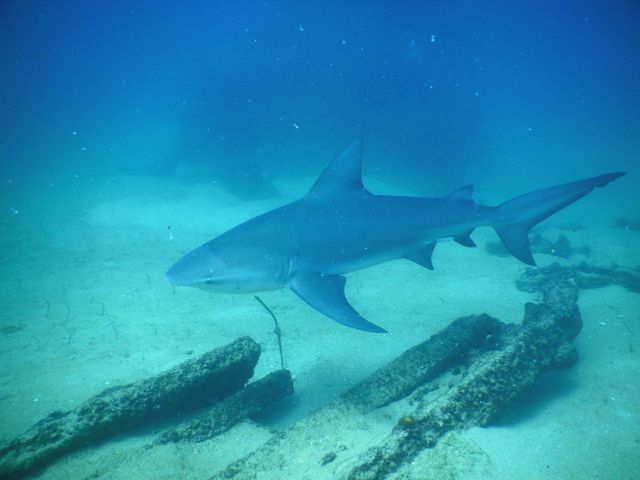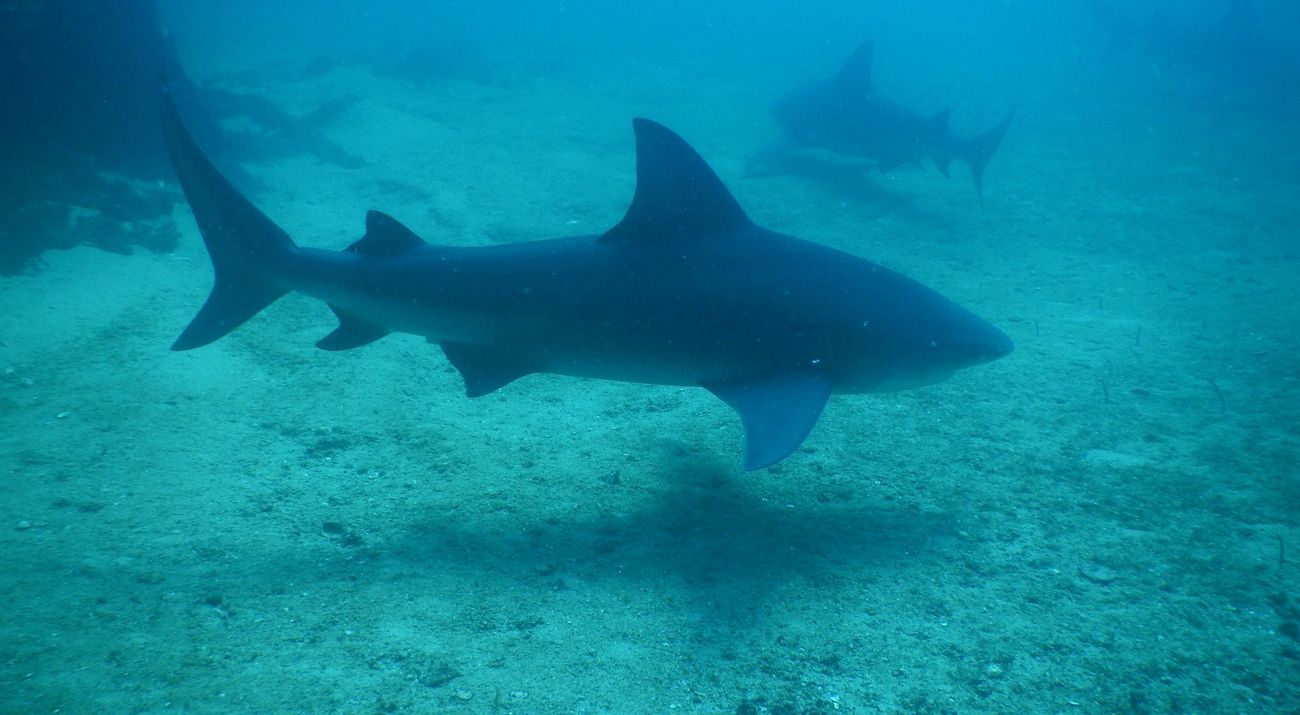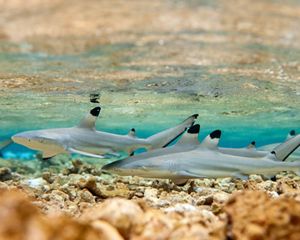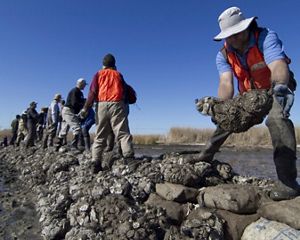Meet the Bull Shark
Bull sharks are a large coastal species that use estuarine habitats as a nursery for their young. They typically grow to a length of 7 to 11 feet and a weight of 200 to 500 pounds and usually live to about 16 years of age.
These resilient creatures can survive in a variety of habitats. While they typically live near shallow, tropical shorelines, they sometimes venture into brackish waters and even swim up through freshwater rivers in search of food. It is the only kind of ocean shark that can withstand prolonged periods in freshwater environments. They are carnivores and depend mainly on fish, birds and dolphins for a majority of their diet. Because they eat so many types of species and because they often head-but their prey before attacking, bull sharks often get a bad reputation for attacking humans, but the truth is that humans pose a much larger threat to bull sharks than they do to us.

Protecting the Bull Shark
The IUCN lists the bull shark as near threatened. Bull sharks are widely fished for their fins and oil, but not much is known about their population trend. Unfortunately, they are also often pulled up as bycatch, which is one of the reasons that scientists predict that populations are decreasing, but more information is needed, which is why The Nature Conservancy has included the bull shark as part of a larger marine life tagging and tracking program in the Gulf of America.
TNC scientists are using data from satellite-tagged bull sharks to better understand the extent of their migration. These data will feed into a larger analysis of marine and avian migration across the Gulf region. The tags will also reveal the different habitats that bull sharks use in this particular portion of the Gulf, and will hopefully provide guidance for future protection efforts.
Learn how TNC scientists catch, tag and release sharks for research.



